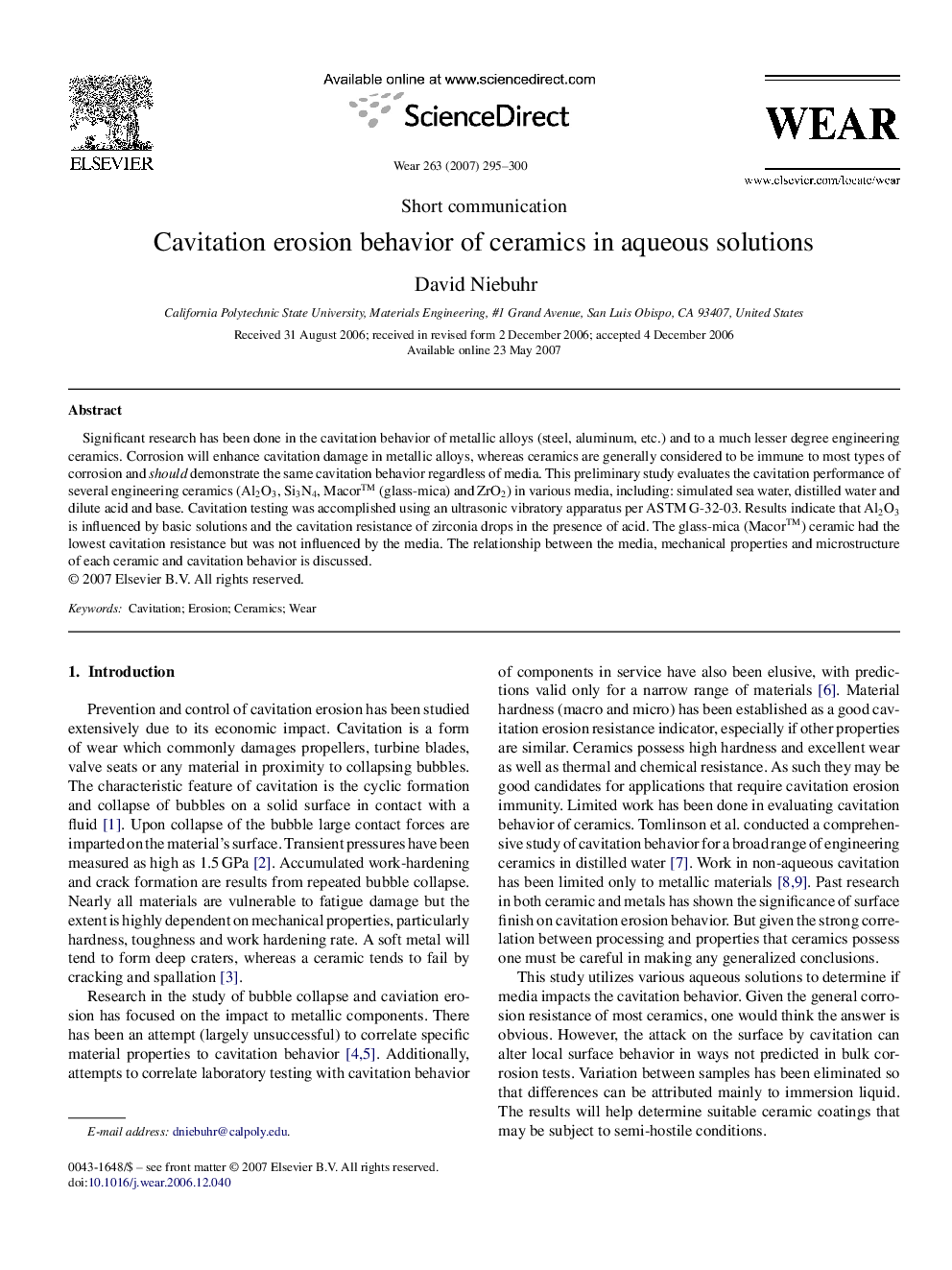| Article ID | Journal | Published Year | Pages | File Type |
|---|---|---|---|---|
| 619829 | Wear | 2007 | 6 Pages |
Abstract
Significant research has been done in the cavitation behavior of metallic alloys (steel, aluminum, etc.) and to a much lesser degree engineering ceramics. Corrosion will enhance cavitation damage in metallic alloys, whereas ceramics are generally considered to be immune to most types of corrosion and should demonstrate the same cavitation behavior regardless of media. This preliminary study evaluates the cavitation performance of several engineering ceramics (Al2O3, Si3N4, Macor⢠(glass-mica) and ZrO2) in various media, including: simulated sea water, distilled water and dilute acid and base. Cavitation testing was accomplished using an ultrasonic vibratory apparatus per ASTM G-32-03. Results indicate that Al2O3 is influenced by basic solutions and the cavitation resistance of zirconia drops in the presence of acid. The glass-mica (Macorâ¢) ceramic had the lowest cavitation resistance but was not influenced by the media. The relationship between the media, mechanical properties and microstructure of each ceramic and cavitation behavior is discussed.
Keywords
Related Topics
Physical Sciences and Engineering
Chemical Engineering
Colloid and Surface Chemistry
Authors
David Niebuhr,
